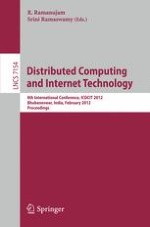This book constitutes the refereed proceedings of the 8th International Conference on Distributed Computing and Internet Technology, ICDCIT 2012, held in Bhubaneswar, India, in February 2012. The 17 full papers presented together with 15 short papers in this volume were carefully reviewed and selected from 89 submissions. In addition the book contains the full versions of 6 invited talks. The papers range over a spectrum of issues related to the theme, covering theoretical foundations, computational tools, and societal applications. State of the art techniques like game theoretic ones are used by authors for analyzing conceptual problems.
